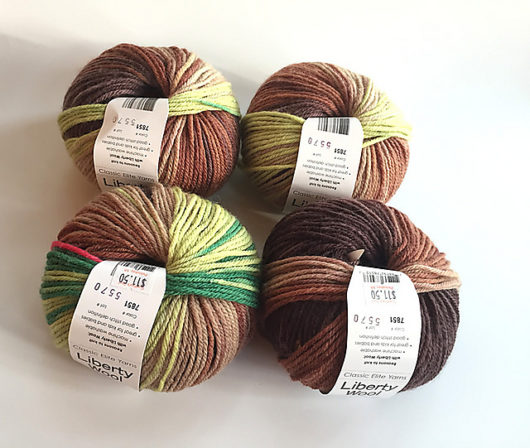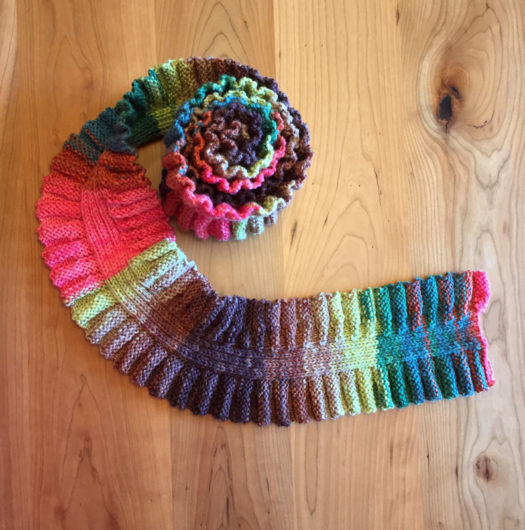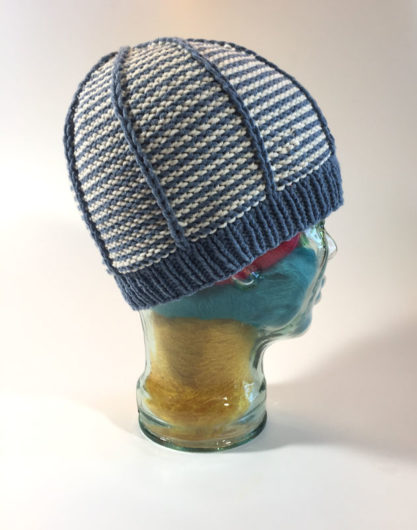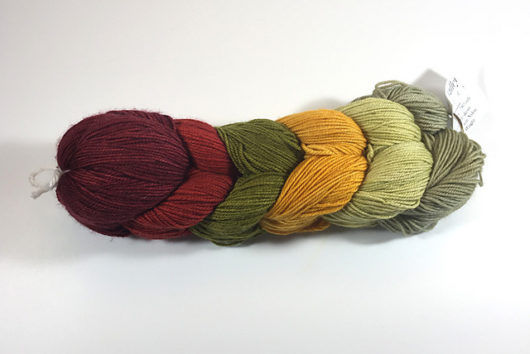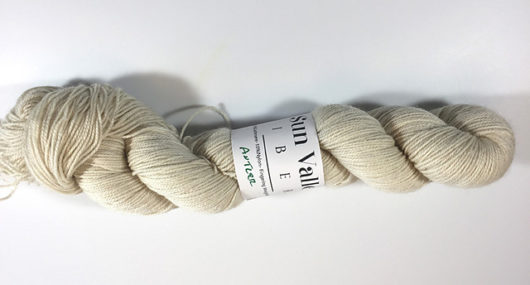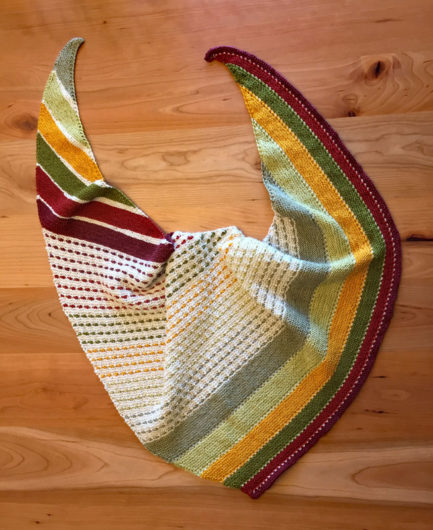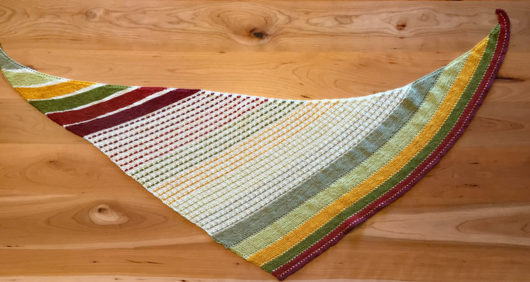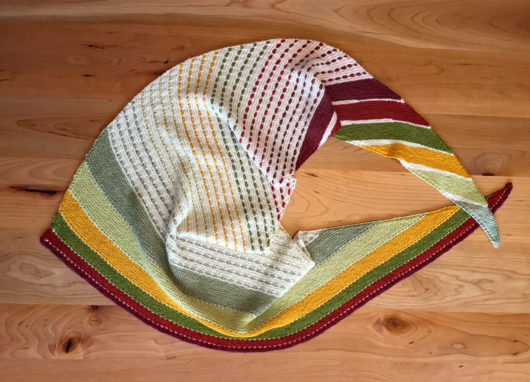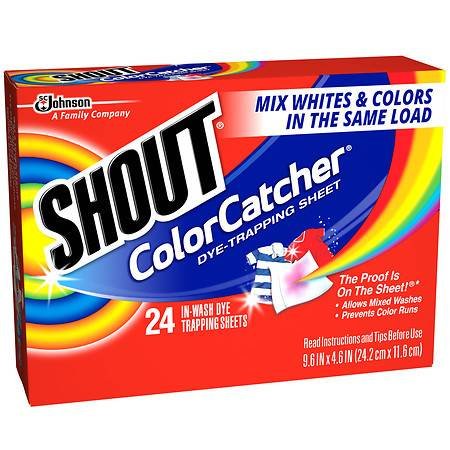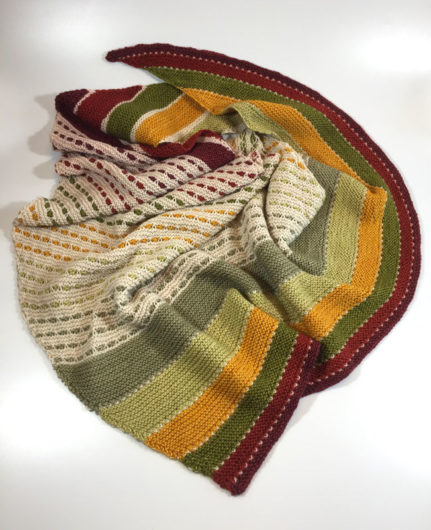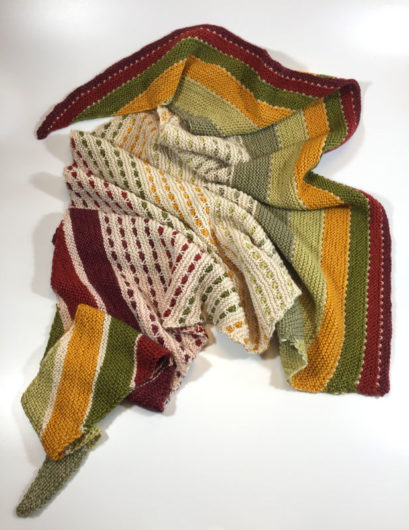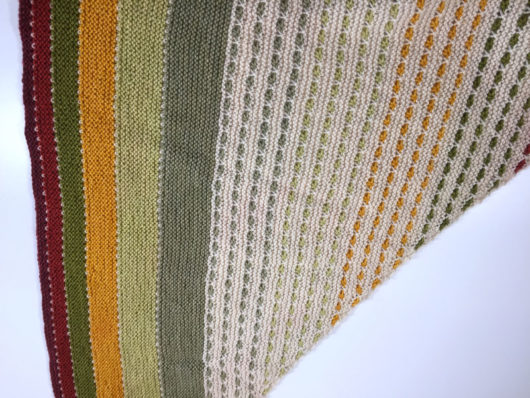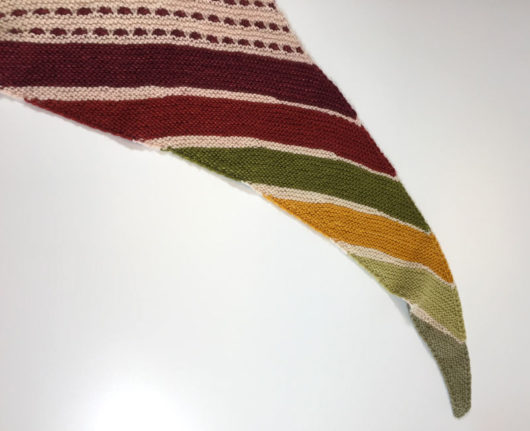All of Classic Elite yarn is discontinued now that the company has folded. I’ve already discussed how much I wish it were not so. I’ve been working through some of my stash of Classic Elite recently, including their workhorse superwash worsted, Liberty Wool. It is, or was I guess, surprising yarn. It could even be a challenge to be sure you got the same colorway when buying multiple variegated balls for a project because, depending on where in the sequence the skein was wound, the balls would look quite different.
These four balls of Colorway 7581 wouldn’t have been my first choice in colors. But choices are very limited these days, if you do happen to find some still available. And 60% off made me more accepting of that St. Patrick’s Day green with the browns.
7581 turned into Molly, by Susan Mills Knits. A friend remarked that this Molly will go with any color coat. True. And folks will see you coming!
Molly’s a big fav of mine. Check out others I’ve knit here and here.
I won’t spill the beans in case you decide to knit Molly. But prepare yourself for a FOUR row pattern. Yep. Four rows, over and over and over. The scarf is reversible. But each side of the ruffle is different. And the sides are flipped along the ribbed spine of the scarf. There are hints on Ravelry about how to read your knitting on this pattern and most of them involve marking right sides or wrong sides. That didn’t do anything for me. The “trick” to keeping your place in this pattern, which consists of two repeated rows followed by another two repeated rows, is to remember: if the ruffle you’re looking at has 2 ridges, work a row 1. If the ruffle you’re looking at has 4 ridges, work a row 2. And don’t forget that rows 2 and 3 aren’t done until you work across the entire width of the scarf. I know that won’t make any sense until you purchase the pattern and give it a try, but it really does tame Molly’s short rows.
I also still had 2 balls remaining of Colorway 7824, acquired in the same 60% off sale as my Molly yarn.
This colorway interested me more, at least from what I could see on the outside of the balls. Everyone who’s a color persnicketee buying this yarn knows to gently poke around in the center of the ball to see what colors are hiding within. Honestly, I didn’t much care. Let it be a surprise.
And it was:
How’d all that blue and green hide out in that center? I think it livens up the skein quite remarkably.
These mittens are another Susan Mills Knits pattern: Mitered Mittens. They are knit in one piece beginning with the cuff. The seams are sewn along the outside of the hand and around the pointed top and on the inside of the thumb. Either mitten fits either hand because the thumb gusset is worked on the side.
 The large size is a perfect fit for me. And if the random variegated Liberty Wool doesn’t strike your fancy, try a self-striping worsted. I didn’t have any in my stash, but some of the striped versions of this mitten look great.
The large size is a perfect fit for me. And if the random variegated Liberty Wool doesn’t strike your fancy, try a self-striping worsted. I didn’t have any in my stash, but some of the striped versions of this mitten look great.

